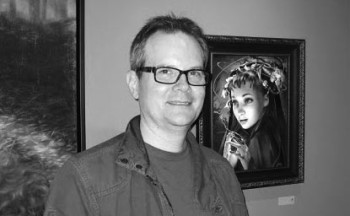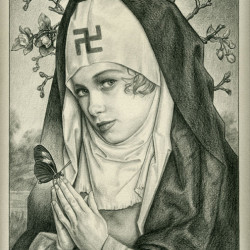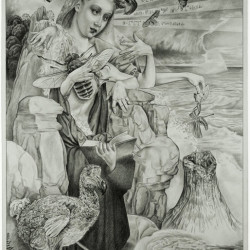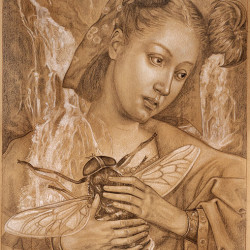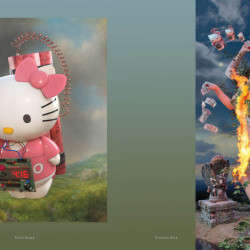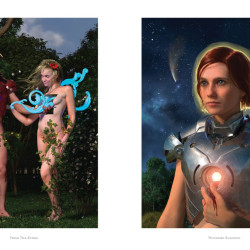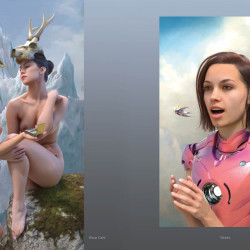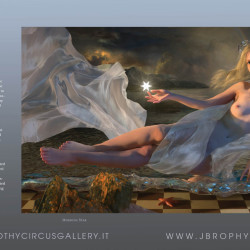Q: What inspires your creations?
A: This is actually a hard question to answer. And to be perfectly honest I really don’t know. It’s often hard to identify where my ideas come from. Sometimes the image of a complete painting will pop into my mind fully formed.
But other times the concept will come only at the end of a long road of trial and error. Other times it’s a matter of simplifying and reducing something that is chaotic and complex down to its core essence.
Q: Are there historic artists who influenced your style?
A: The work of other artists used to influence me much more in the past than it does today. I have always loved the work of the early Flemish painters like Memling and Van Eyck, whose styles more closely resemble the kind of painting I do. But I also love the 17th century Dutch painters like Rembrandt, Dou, Vermeer, etc, even though their styles are very different from mine. I still think that Rembrandt was the greatest painter to ever live.
Among contemporary artists I’m a huge fan of Odd Nerdrum and Donald Roller Wilson.
Q: If you could undertake any project with full funding what would it be and why?
A: It’s not related to art especially, but I would love to fund and promote science education in the public school system. And along with it I would love to see the introduction of classes to teach kids from a young age about how to think critically, and how corporations, politicians, etc, attempt to control the public by using sophisticated marketing strategies and the psychology of persuasion. The late Carl Sagan used to call it the “Baloney Detection Kit”.
Having these skills would provide kids with the ability to recognize when they are susceptible to buying into bad ideas, and also how to ask the right questions to best investigate the credibility of certain claims. We could all have benefited from this during last year’s election!
Q: Tell us a little about your method and how you came to favor this medium.
A: I have a two part process that I follow when making my paintings. I first work out the entire composition using the technical skills that I learned during the 12 years I worked in the computer games industry. I use a variety of software programs to do this, such as Maya, 3DS Max, ZBrush, etc for modeling, V-Ray and/or Arnold for shading and rendering, and Nuke and Photoshop for compositing.
Once everything is worked out to my satisfaction I have a print made at the same size the final painting will be and use it as a reference while I paint. I then transfer a line drawing to the canvas or panel that I will be working on and then recreate/translate the computer generated composition into a hand painted art object using traditional oil painting techniques. This translation from a computer generated image into a handmade painting is a very important part of my work.



